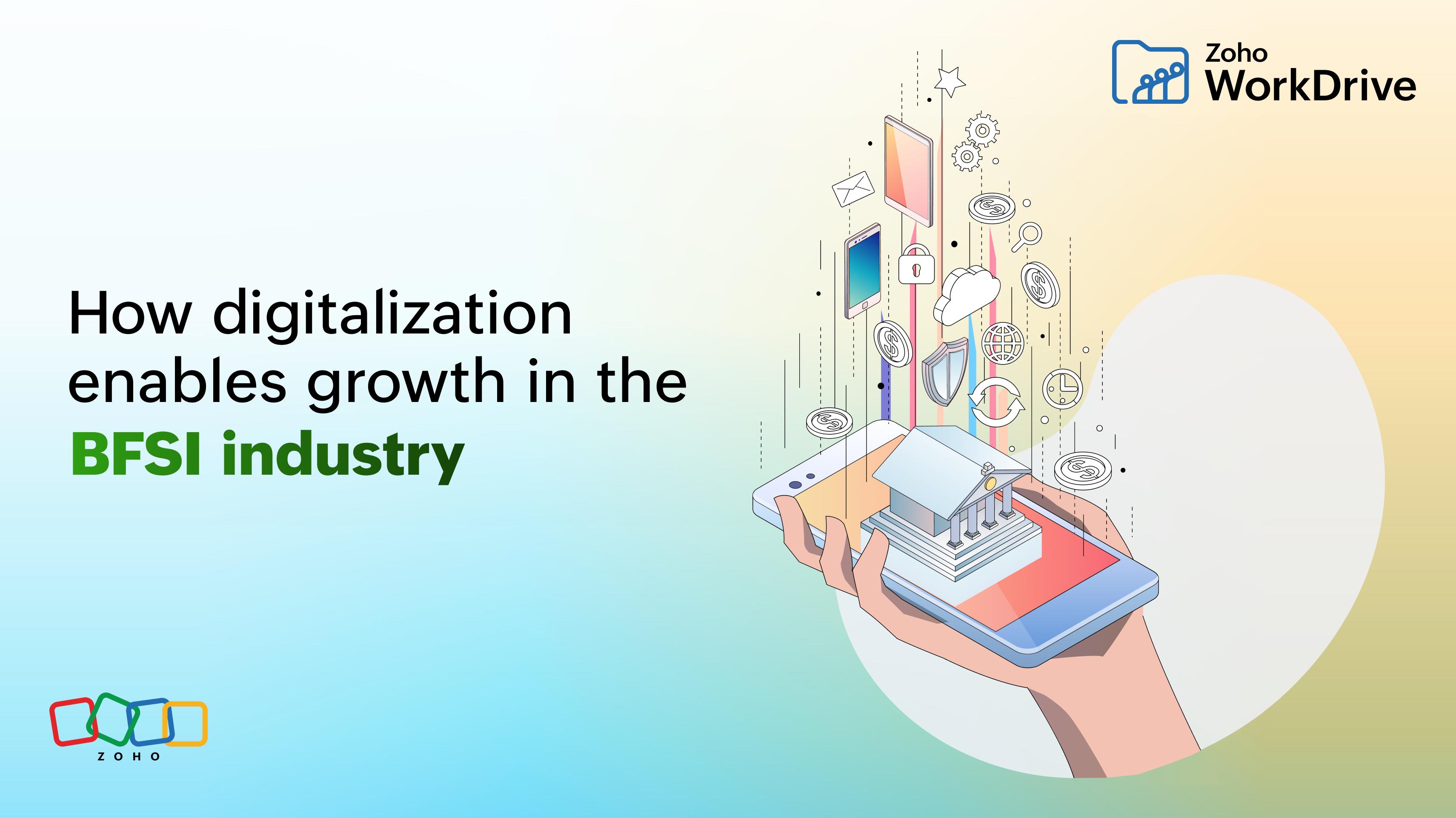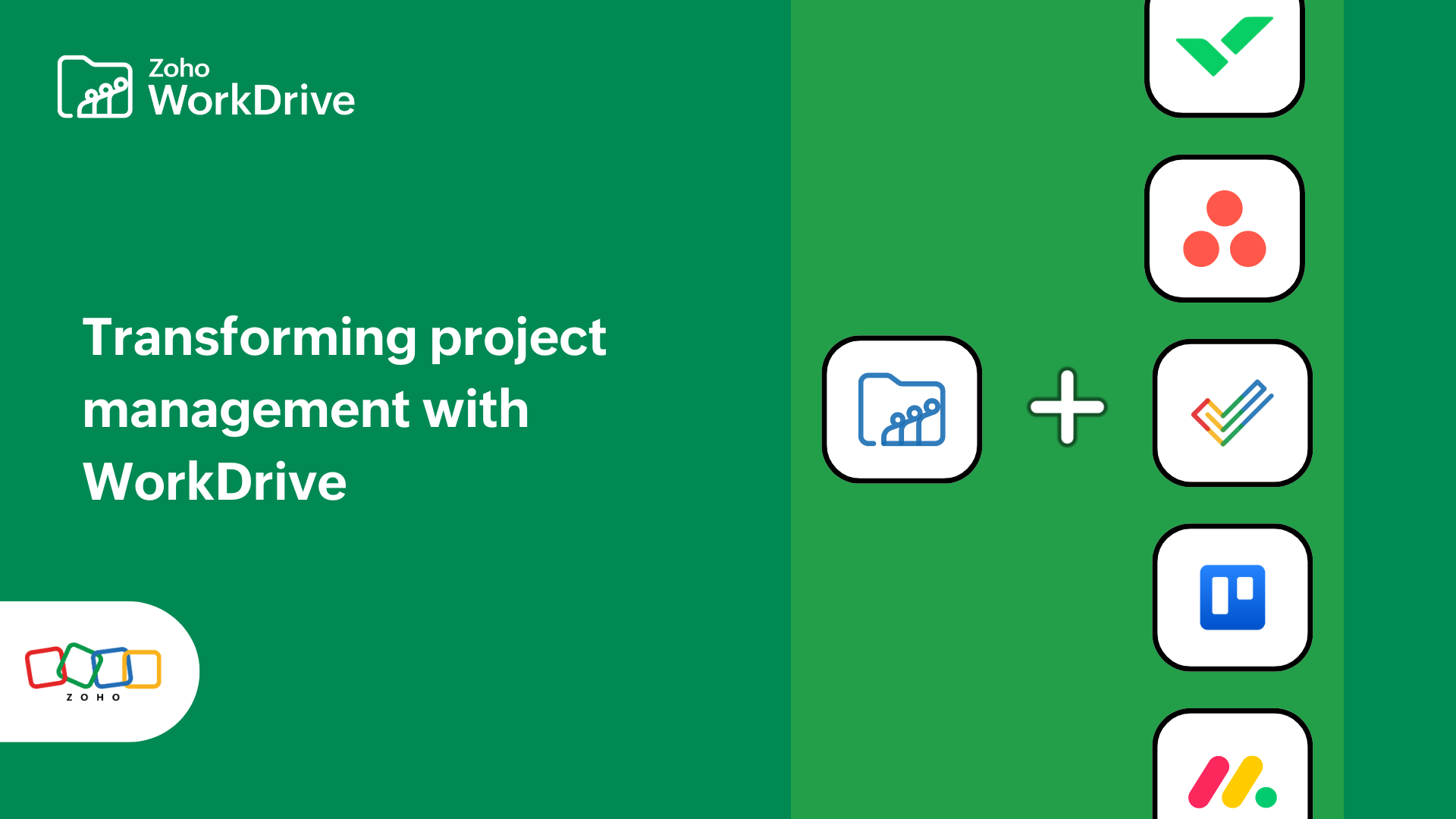Digitalization and the growth in BFSI
- Last Updated : August 21, 2024
- 351 Views
- 7 Min Read

The world is rapidly moving towards a complete digital age. One of the industries that benefit from this and impacts the citizens of any state in direct and indirect ways is the BFSI (banking, financial services, and insurance).
A Gartner report states that the IT spending of BFSI will reach $652 billion in 2023.
When compared with the previous year, the rate of growth tops the amount spent on buying software services. Being a document and paper driven industry, the need for efficient document management platforms is imminent. Take a deeper look into the world of BFSI and how its digitization impacts everyone.
What is BFSI?
The acronym, BFSI expands to banking, financial services, and insurance. It is the common term used to denote the interconnected essential services ranging from banking and money management firms to insurance corporations. As a key factor in defining a country's economy, BFSI is a bridge that connects people with the state's financial system through multiple channels. For dedicated service deliveries, these channels include both physical and digital approaches.
Speaking of channels, the BFSI has a multitude of approaches which gained popularity with the omnichannel approach in the industry.
How and why do omnichannel financial services work?
Consider a customer making a payment at the grocery store using a smart watch. The same customer then goes to a fuel station and uses their credit card's RFID and makes another payment. The same person then makes online purchases using the bank's internet banking facilities. To a financial institution, these are pieces of data which, when used effectively, can benefit both the customer and the organization.

Here's how it works.
The devices or the modes of payment give data on the various channels used by the customer. The geographical location and the amount spent broadens the understanding of customer expenditure. There can also be other channels wherein the customer can use the services offered by the financial firm. The data can be used to hyper-personalize the benefits to their users which can range from offers to loans with discounted rates or credit card privileges. To note the rising use of digital banking, a report by the American Bankers Association mentions banking through mobile apps is preferred by 48% of users.
The data collected from the customer's use connects the dots to help create a satisfying customer experience, which reinforces the necessity of a file management platform.
How does a file collaboration platform connect the dots?
All the industries covered under BFSI rely on document management as their backbone. In fact, financial institutions are some of the most paper-intensive sectors, with a few organizations still relying on physical documentation.
Drawing from these statistics, we can conclude that file digitization and document management are inevitable. The transition towards a completely digital BFSI firm necessitates three essential steps: digitization, digitalization, and digital transformation. The end of the 20th century was a revolutionary time for digitization, and it was the early 1970s that paved the way for its first steps.
In simple words, digitization is the process of converting physical documents into digitally available information.
The second step, digitalization, refers to the utilization of the digitally available information to build a viable and sustainable business model that adds value to the organization. This is where document management and content collaboration platforms come into play, cutting down tedious time-consuming processes and increasing the effectiveness of businesses.
The final step to digital BFSI is digital transformation, where organizations bring in operations like software testing and performance testing to keep up with evolving technologies. A modern user-base requires apps to fulfill the needs of the dynamic market, which is to let them choose their preferred channel to access the services.
With most of the BFSI sector currently going through digitalization and transformation phases, here's what makes file management and content collaboration a game changer in the BFSI industry.
AI in the banking sector
Artificial intelligence has become the catalyst in many industries today, and banking is no exception. With multifaceted options to connect with existing apps, leveraging AI can change the landscape of financial document management. With many platforms offering numerous options to implement AI into your banking firm, we've collated a few noteworthy features of an effective document management and collaboration platform for your banking firm.
Unified search
Looking through numerous files for a single financial term sounds daunting. Now think of the same search done across your complete repository, taking all the team folders into consideration. A unified or a smart search makes this simple. Searches now use more than file names to close in on a file. A smart searching ability allows you to find a file not just using the file name, but also the file context, text in images, and even objects shown in the images.
Process automation
Imagine an instance where a customer applies for a loan in your bank. In a non-digitized banking firm, this requires moving files through many tables for approval. This process leaves no option to set up a reminder, leave a line-specific comment in the document, and above all, consumes time in transit.
Automation can be a solution to such processes. Admins can set up approval workflows and minimize human intervention to generate a systematic workflow.
Interconnected platforms
With more solutions coming up in the market for every specific function, there is a plethora of options for businesses to choose from. This positive aspect lets firms compare and choose from multiple platforms that fit their requirements, making it hard for applications to communicate laterally. Building custom apps using webhooks can mitigate this issue. Webhooks allow users to set up a trigger action in a platform, which in turn initiates a new action in another application of choice, thus building a connection across platforms of your choice.
Digital financial file repositories
With confidential user data and the need to manage and regulate the same at an enterprise level, the financial services industry benefits from digital file repositories on a large scale. For a large scale financial institution, apart from the reduction in the cost of document processing and quicker retrieval of documents, there are a few other features that impact the business positively.
Subfolder level access
The financial service industry knows the importance of segregating documents according to requirements. But what if a file has to be worked across departments, wherein a person who is a part of another team has to access the files? Although simple, subfolder level access can be a great help in these situations. With the option to revoke folder access by the admin, the files will always be safe.

360-degree monitoring
Your balance sheets and invoices are always safe with an effective DMS. Modern platforms offer an option to monitor the number of devices that are used and the user accessing them. At any given time, admins can choose to restrict the ability to share files externally or completely revoke access to a team member's device. This gives around-the-clock monitoring of all your important files.
Total compliance
To protect the sensitive information of the customers, various nations have their own compliance standards. Failing to abide by these regulations will attract both financial and legal troubles. A few noteworthy compliance regulations are, the GDPR in the European Union, CCPA (California Consumer Privacy Act) in the State of California, and HIPAA in the US for healthcare related data management. This brings up the importance of implementing a completely compliant and regulated platform, which will not only save you from penalties but also improve customer trust.
Hassle-free insurance document management
Claims, audits, damage reports, policies, and a lot more document handling activities are a daily routine for any insurance firm. All these come with a hefty reliance on files, documents, and general paperwork. A document management platform can be effective in running these routines effectively.
Effortless organizing
File categorization and segregation saves them from being lost. Many companies today spend money to find their lost documents. Being a simple step, labeling files can save hours of your time when it comes to the retrieval of long-stored documents. Apart from personally identifiable labels, there are also labels that are visible to the whole organization and can be created and maintained only by admins.
Right person, right access
When a firm constantly collaborates with multiple clients and businesses, the safety of documents is paramount. A clear picture of the team members will allow you to make use of granular controls which most of the modern DMS offers. Adding to this, insurance corporations can also bring in external users with chosen access levels and transform the document-based processes more collaboratively.
Effective backups
Imagine a file that is deleted accidentally, and the company needs it after a period of three months. An effective file recovery system will save you from such troubles. Offering multiple options regarding the days to retain the deleted files and completely backing up in multiple locations will prove to be productive in the long run.

Final thoughts
Although the whole industry is moving towards a digital-only future, paper documents still hold a substantial share of the BFSI industry. Taking the money involved in the creation and maintenance of these documents into consideration, arriving at a conclusion becomes easier. Using digital technologies and multiple software platforms will improve both operational efficiency and customer satisfaction. However, all these measures still put us in the digitalization step. The future is where automated QA, artificial intelligence, and machine learning take precedence, drive digital growth in the industry, and enable functioning without a snag.










